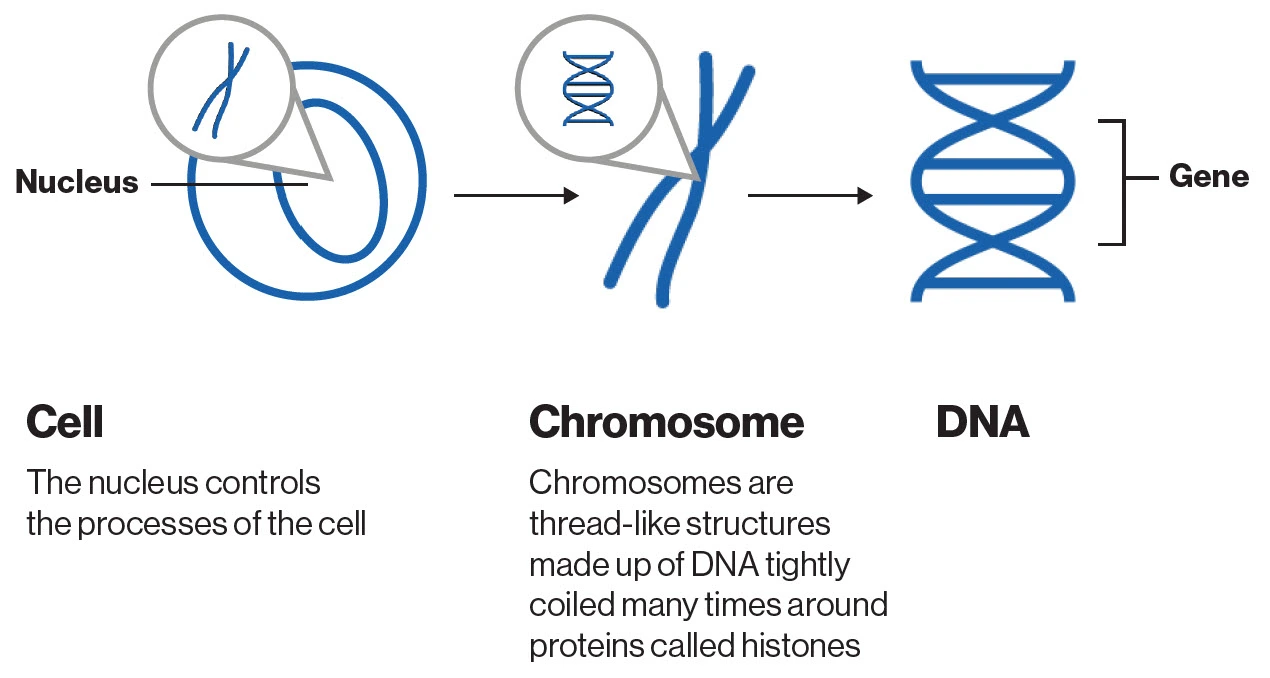What are cells and genes?
Cells are the basic building blocks of all living things, and genes can be found deep within cells. Genes are small sections of DNA that carry genetic information and instructions for making proteins, which help build and maintain the body1.

Every person has around 20,000 genes and two copies of each of their genes—one from each parent. Small variations in genes result in differences in people’s appearance and, potentially, health1.